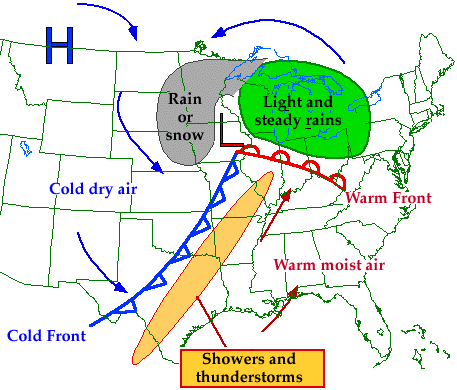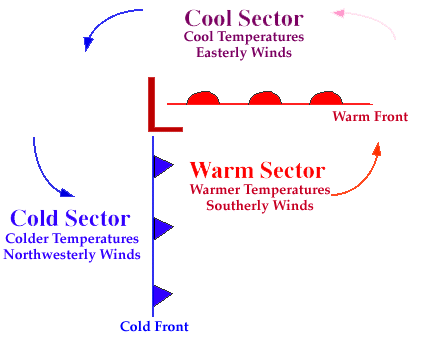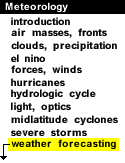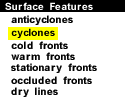
|
A cyclone is an area of low pressure around which the winds flow counterclockwise in the northern hemisphere. Since a cyclone is also known as a low pressure center, moving in any horizontal direction away from the "Low" will result in increasing pressure. Air converges into a low pressure center which causes air to rise. The rising motion may produce clouds and precipitation. Different precipitation types include rain and thunderstorms in the summer and fall seasons, to rain, thunderstorms, and even snow during the winter.

A low is represented on a weather map by a red "L". As a cyclone approaches, the likelihood of clouds and precipitation increases.

Winds flow counterclockwise around a low pressure center in the northern hemisphere and temperatures are dependent upon the location relative to the low. Southerly winds associated with an approaching cyclone are likely to result in warmer temperatures while northerly winds found on the backside of a low, or once a low has passed through, typically result in a cooling trend.

anticyclones |
|

cold fronts |




